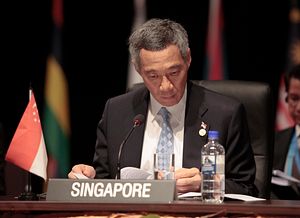On March 24, Singapore unveiled an expansionary fiscal budget as part of the city-state’s ongoing drive to increase productivity, cope with economic headwinds, and ready itself for future disruptive technologies such as robotics and information and communications technology (ICT). A sizable part of the budget is also aimed at building a “caring and resilient society.” In other words, there is a dual emphasis on enterprise and innovation on one hand, and social support on the other.
The 2016 budget was Finance Minister Heng Swee Keat’s first, as well as the first budget since the ruling People’s Action Party (PAP) won a resounding victory in the 2015 general elections. It also comes after a day after the one-year anniversary of the passing of Singapore’s founding father and first prime minister Lee Kuan Yew. The budget brings Singapore into the next 50 years, following the city-state 50th jubilee celebrations in 2015.
The key financial factoid to note is an overall budget surplus of S$3.4 billion (US$2.5 billion). Revenue is expected to increase by S$4.3billion (6.7 percent) from vehicle taxes and a large infusion from investing the country’s reserves, both cited as one-off factors. This increase in revenue has offset the planned increase in spending of S$5 billion, a 7.3 percent increase.
Under the Industry Transformation Program, the government will support automation, provide funding and institutional support to technopreneurs, and invest heavily in industry-research collaboration. Singapore’s firms have struggled to internationalize and the country still relies on government support to incubate the technological sector and foster small and medium enterprises’ (SMEs) development.
The corollary to business incentives and support for enterprise and innovation is short-term measures to help SMEs weather the economic slowdown. Measures include an increase in corporate tax rebate, more loan assistance, and – of particular interest due to its political sensitivity – a one-year deferment of foreign worker levy increases in the marine and process sectors. The offshore-marine sector has been particularly hard hit because of low oil prices and a drop in international shipping volume. As for the growing presence of foreign workers, it is a political lightning rod. Singaporeans have criticized the government for allowing too many foreigners into the country, resulting in job competition, social problems, and disconcerting changes in societal demographic.
On social policies, particularly noteworthy is a permanent silver support scheme which Heng called a “major new feature” in Singapore’s social security system. The scheme is basically a graduated cash transfer for retirees based on their housing type. The scheme will cost the government nearly S$320 million (US$234 million) just in its first year. Alongside a child development grant to newborns and housing subsidies for families with young children, you can begin to see why I proclaimed the social spending in the 2016 budget “sizable.” The latter schemes also have the added objective of addressing Singapore’s below-replacement level birthrate, a policy conundrum that has kept Singapore’s policymakers up at night.
Hence, the budget has been rightly described by local media as “a prudent plan that balances targeted relief for companies and households with the longer time objective of getting them future-ready.” Other than the virtues of fiscal prudence, the budget is a reflection of the government’s reading of economic winds of change — i.e. the move in production patterns from component part supply chains toward a clustering of tasks, a service-based economy with a premium on innovation, and the growth of disruptive technologies like robotics and ICT. One way the government has tried to be future-ready is to be one step ahead of the competition for investment by ensuring that firms based in Singapore benefit from a local ecosystem conductive to innovation and can internationalize easily. Singaporean workers are also encouraged to be versatile and quick to update their skill-sets, particularly in ICT, helped along by a scheme named the Adapt and Grow initiative.
Economic growth in the coming year is expected to be between 1-3 percent. In other words, the Singapore economy is chugging along fine despite the regional slowdown, though fears of a technical recession are not unfounded given the city-state’s highly exposed economy. The twin virtues of prudence and foresight have paid off so far, but it remains unclear whether a productivity-driven growth model and a top-down statist approach is truly the one-size-fits-all that will see Singapore through its next 50 years of nation-building.

































